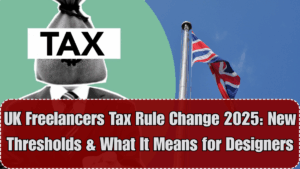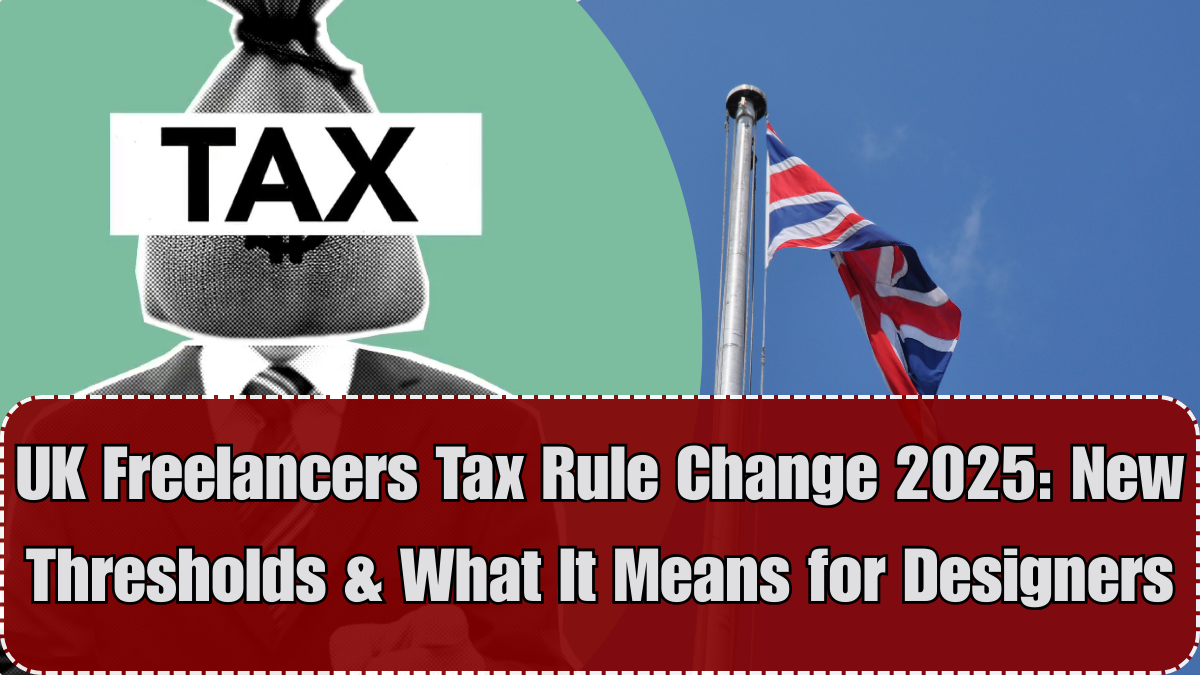The UK’s growing gig and design economy is seeing a significant shift in tax policies in 2025, especially for self-employed individuals and creative freelancers. Whether you’re a full-time illustrator, part-time graphic designer, or digital marketer juggling client gigs, these tax updates directly impact how you report income, pay National Insurance (NI), and plan your finances.
The UK Freelance Tax Update for Creatives 2025 includes revisions in income thresholds, National Insurance rates, VAT registration requirements, and digital filing procedures. These changes are being rolled out by HM Revenue and Customs (HMRC) to simplify tax reporting and better align freelance contributions with employee equivalents.
If you work in any creative field—from design and writing to video editing or UX—you’ll want to pay close attention.

Key Changes in 2025 for Freelancers
HMRC has introduced the following major changes that come into effect from April 6, 2025:
-
Increased Income Tax Threshold for Freelancers:
The personal allowance remains at £12,570, but the basic rate band (20%) now applies from £12,571 to £55,000 instead of the previous £50,270. This offers slightly more breathing room for middle-income freelancers. -
National Insurance Class 4 Threshold Changes:
The lower profits limit is now £13,000 (up from £12,570), and the Class 4 NIC rate is decreased to 8% for income between £13,000 and £55,000. This is good news for freelancers earning moderately. -
Removal of Class 2 NICs:
Self-employed individuals no longer need to pay Class 2 NICs separately. Coverage for State Pension will now be based on Class 4 NICs alone. -
VAT Registration Threshold Update:
The VAT registration threshold has increased to £95,000 in 2025. If your total income from self-employment crosses this, VAT registration becomes mandatory. -
Compulsory MTD (Making Tax Digital):
All self-employed individuals earning above £30,000 annually must now use Making Tax Digital (MTD)-compliant software to maintain digital records and submit quarterly updates to HMRC.
What This Means for Designers & Creative Freelancers
Creative professionals—whether freelance photographers, video editors, writers, or UI/UX designers—often operate in mixed-income settings, juggling client work and grants or stipends. The 2025 changes mean:
-
Lower tax and NI burden for those earning between £13,000 and £55,000 annually.
-
Less administrative hassle with Class 2 NICs gone.
-
Stricter bookkeeping expectations, especially with mandatory digital filing and quarterly tax updates.
-
Need to track income carefully, especially if nearing the VAT threshold due to multiple small clients or international work.
These updates aim to formalize freelance work in line with salaried roles, improving access to benefits like pensions, maternity allowance, and easier mortgage approvals.
Tips to Stay Compliant in 2025
Here are a few quick ways freelancers in the design economy can stay compliant and tax-ready:
-
Use cloud accounting tools like FreeAgent, QuickBooks, or Xero (MTD-compliant)
-
Set aside 25–30% of income for tax and NI payments throughout the year
-
Track business expenses like design software, subscriptions, internet bills, and equipment—these are deductible
-
Submit quarterly MTD updates if above the £30,000 annual threshold
-
Hire a freelance tax accountant during January filing rush if unsure
Grants, Reliefs & Support for Creatives
Freelancers in the creative sector can also benefit from:
-
SEISS-style creative relief grants (available to artists, designers, and media freelancers during downtime)
-
Tax relief on co-working spaces and digital tools
-
R&D tax credits if working on innovative digital art or design platforms
Check with your local Creative Arts Council or HMRC’s creative sector guidelines to see what’s applicable.
FAQs
What is the new Class 4 National Insurance rate in 2025?
The new Class 4 NIC rate is 8% for profits between £13,000 and £55,000, down from 9%.
Do freelancers still need to pay Class 2 NICs?
No, as of 2025, Class 2 NICs are scrapped. State Pension eligibility now relies on your Class 4 contributions.
When is VAT registration required in 2025?
If your freelance income exceeds £95,000 annually, VAT registration is mandatory.
Is Making Tax Digital now compulsory for all freelancers?
Yes, if you earn over £30,000 annually, you must use MTD software to file taxes and keep records digitally.
Are there any tax reliefs for creative freelancers?
Yes. You may claim reliefs on digital tools, subscriptions, workspace rent, and may qualify for grants during income gaps.
Click here to know more.
